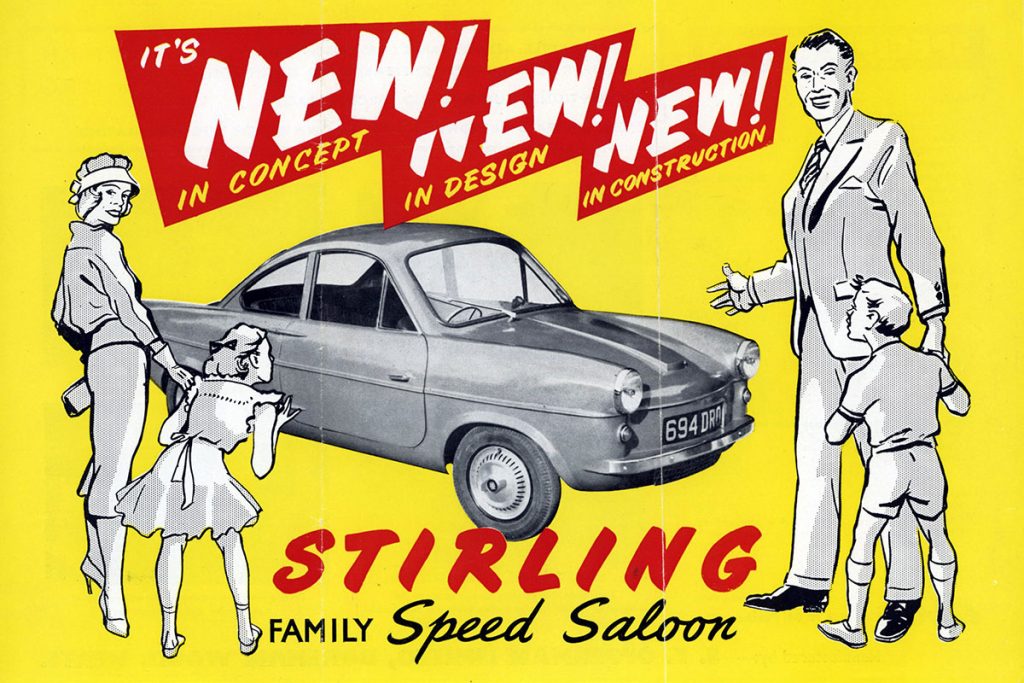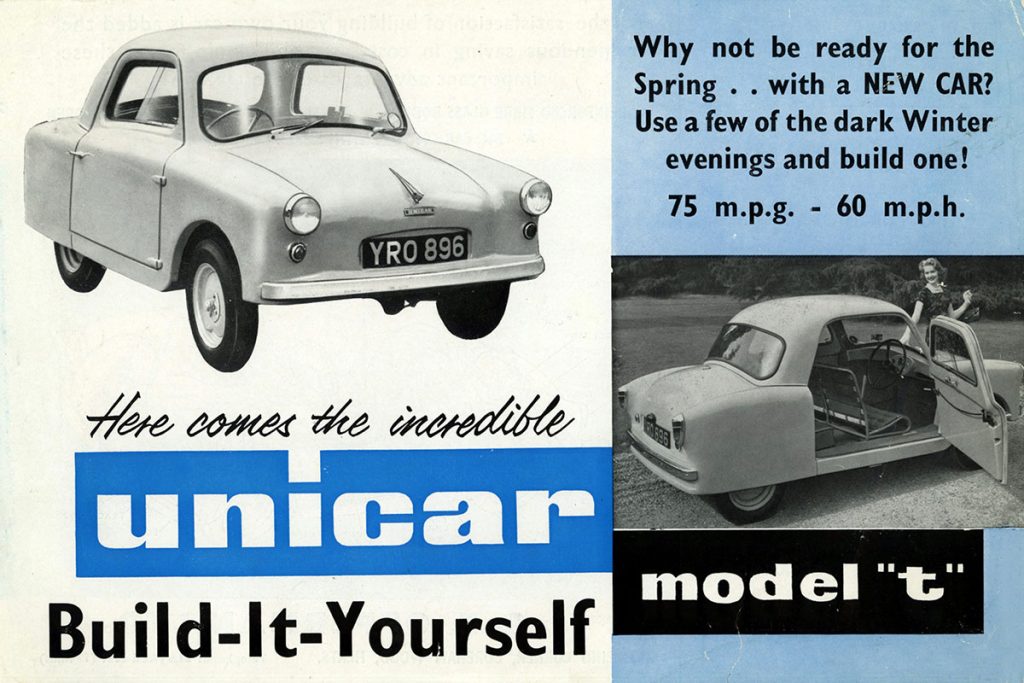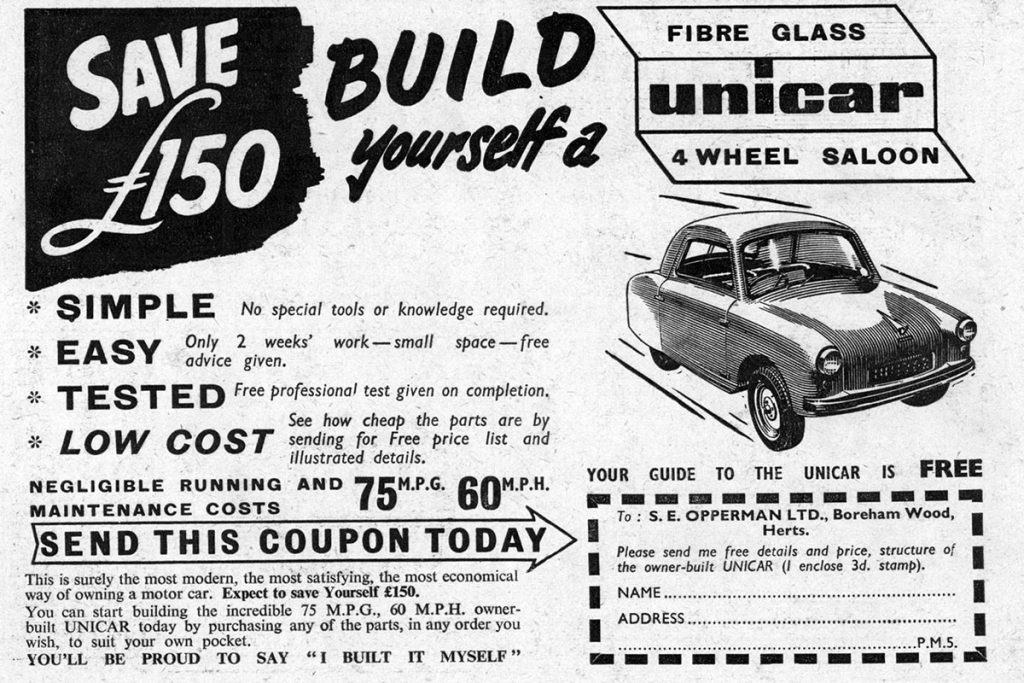When the London Motor Show opened its doors in 1956 there was a new economy car in town. Britain’s cheapest new car in fact, in the shape of the Opperman Unicar, which was introduced to ride the microcar boom of the 1950s.
During the Fifties consumerism grew sharply; employment was high, people had money to spend, and credit was easier to come by than ever before. The result was a raft of cottage-industry car makers that sprang up with all sorts of cars that put economy above all else. This was the age of plastic body shells, which cut production costs enormously compared with the steel or aluminium alternatives.

Most of these cars featured tiny one- or two-cylinder engines of the type that nowadays might be deemed too tame for a lawn mower, but the world was a very different place in the 1950s, and pretty much anything went when it came to basic family transport. Not that many of these short-lived cars ever sold in big numbers.
The company behind the pint-sized Unicar was Hertfordshire-based tractor manufacturer SE Opperman, who reckoned that his company should move into cheap family transport; the result was a two-door saloon with enclosed rear wheels.
The Unicar’s body shell was made up of six plastic mouldings, bolted and bonded together to form a monocoque. In the rear was an Anzani 322cc two-cylinder two-stroke engine, which sent its 15bhp to the rear wheels via a three-speed manual gearbox. Despite such a puny powertrain the Unicar was reckoned to be capable of as much as 60mph, largely because of the low weight of just over 300kg. Later models got even more power (18bhp) courtesy of a 328cc Excelsior engine; the idea of nudging motorway speeds in a Unicar must have been truly terrifying.
Whereas the front track was a reasonably generous four feet, at the back it was 12 inches narrower, while the drum brakes front and rear were operated via cables rather than hydraulics. Even at urban speeds every journey in a Unicar must have been a white-knuckle ride.

Incredibly, despite its diminutive proportions (just 290cm long and 142cm wide) the Opperman Unicar was claimed to be a four-seater, with those in the front getting a hammock-style bench seat. The engine intruded into the cabin at the rear and either side of this a small, flat box was moulded into the floorpan; small kids were supposed to get comfy somehow.
Despite the fact that fierce competition in the economy car sector meant that sales were hard to come by, Opperman decided to expand the model range with the unveiling of the Stirling prototype in 1958. An attempt to take Opperman upmarket, the Stirling looked great and it had significantly more power thanks to the fitment of a 25bhp, 424cc engine.
A second prototype followed in 1959, with a 500cc engine for even easier cruising, but just as the Stirling was set to be introduced the BMC Mini burst on to the scene. As with so many microcar manufacturers, Opperman’s entire business became untenable overnight once the Mini was on sale; you could buy the BMC wonder for just £497 whereas the Stirling weighed in at £541. Game over.
Also read
Cars that time forgot: Caterham 21
Cruise in style in the MG RV8 coupé that never was
From Suzulight to Spacia, Suzuki celebrates making 25 million minicars











